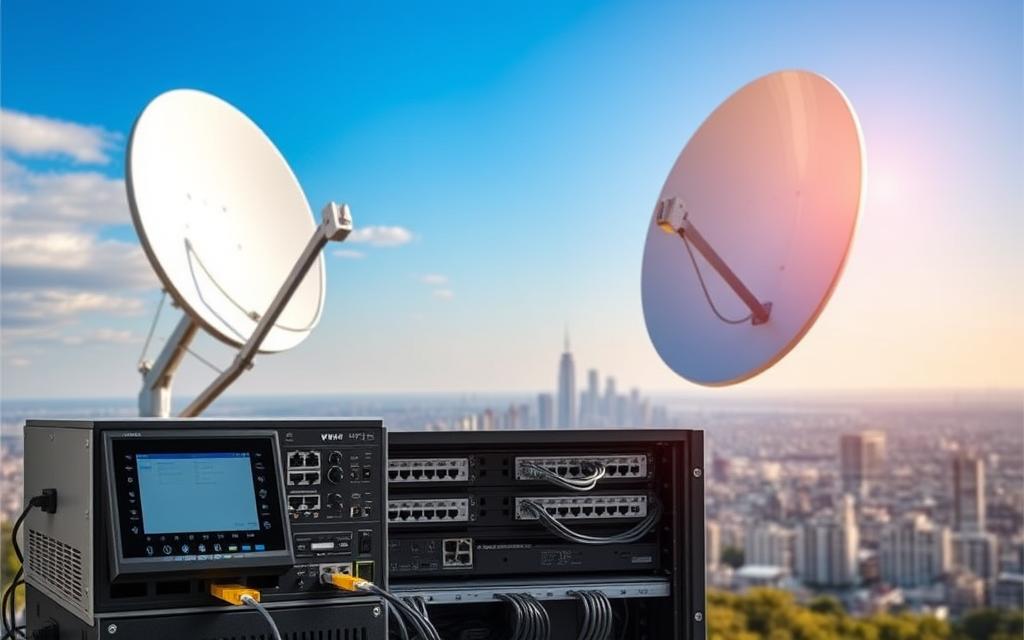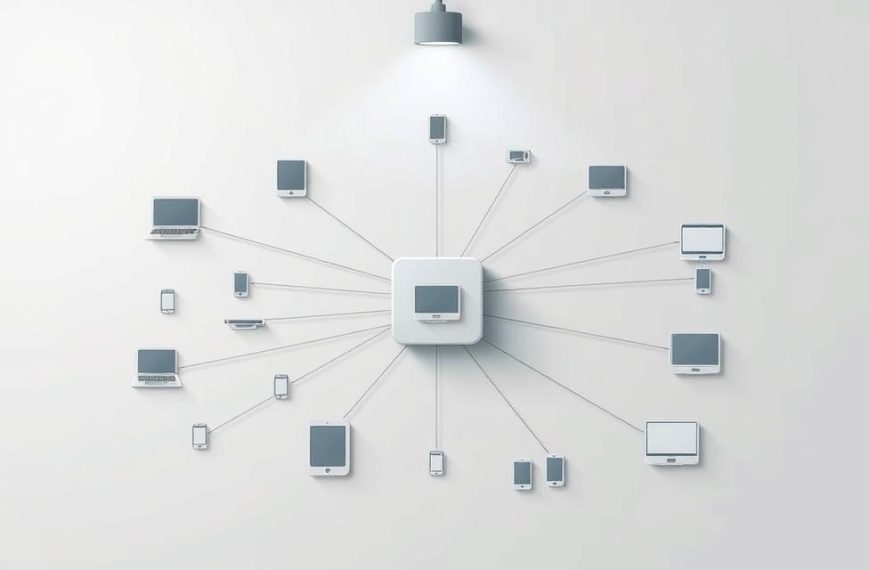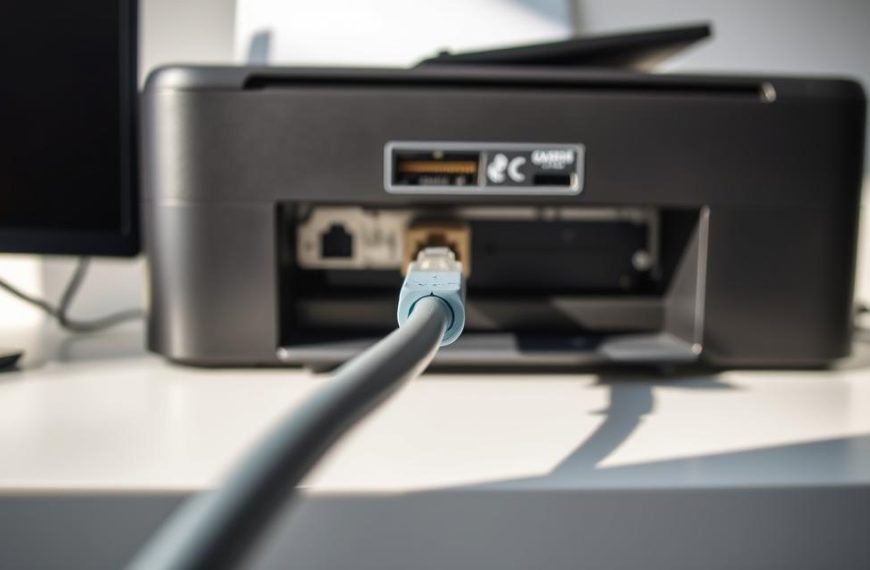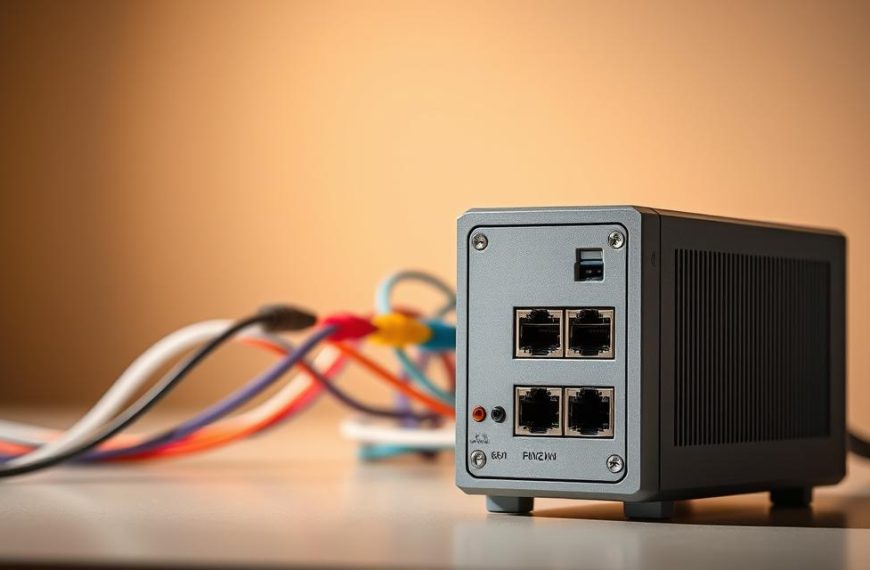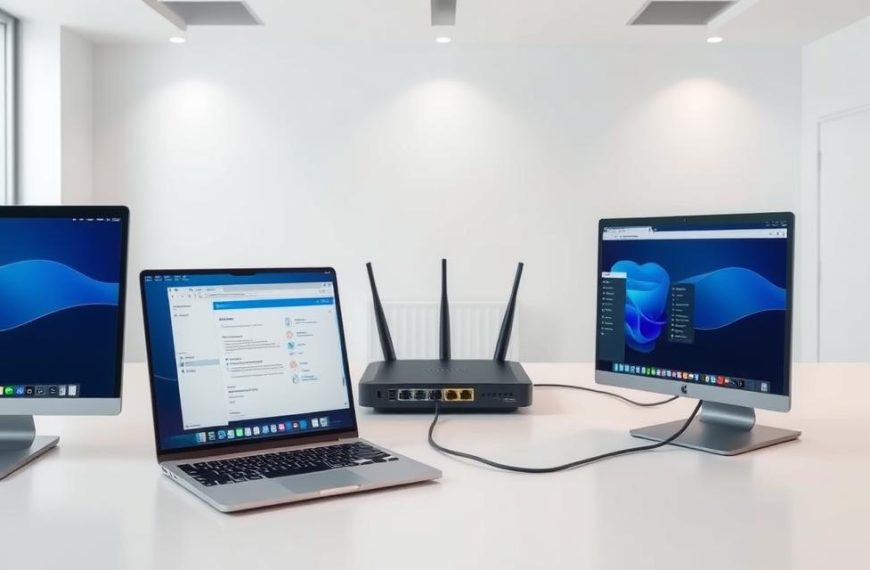Modern satellite communication has changed how we connect over long distances. At its core is VSAT, short for Very Small Aperture Terminal.
VSAT uses small dish antennas, usually between 75 centimetres and 1.2 metres. These terminals act as private earth stations. They can send and receive signals via satellites in orbit.
This computer network technology shines in tough spots. VSAT offers reliable internet where other options fail.
It’s great for remote areas, ships at sea, and mountainous places. VSAT is key for places where land-based networks can’t reach.
What is VSAT in Computer Network: Core Concepts
To understand VSAT technology, we need to look at its basic principles, history, and structure. This part will cover the main ideas that show how Very Small Aperture Terminal systems work in today’s networks.
Defining Very Small Aperture Terminal Technology
Fundamental Principles and Operational Basics
VSAT technology uses small dish antennas, usually between 0.75 to 2.4 metres in size. These systems connect to geostationary satellites, which are about 35,786 kilometres above the Earth’s equator.
The operational principles involve sending and receiving signals between earth stations and satellites. This makes reliable communication possible in places where normal infrastructure is not available.
VSAT networks have a star topology. This means many remote terminals talk to a central hub station. This setup helps in spreading data efficiently and managing the network from one place.
Historical Context and Evolution
The start of satellite communication began with ideas from Konstantin Tsiolkovsky. He first thought of geostationary orbit. Later, Hermann Oberth and Herman Potocnik built on these ideas.
In 1945, Arthur C. Clarke wrote about the orbit needed for communication satellites. His work laid the groundwork for today’s satellite systems.
In the 1960s, NASA’s Syncom satellites made live satellite communication possible. These early satellites showed that space-based communication was doable.
The first commercial VSAT systems came out in the early 1980s. They were C-band receive-only systems by Equatorial Communications. This was the start of using VSAT technology for business.
Essential Components and Architecture
Earth Station Equipment Configuration
The earth station part of VSAT systems has key elements. The outdoor unit has the antenna, radio frequency transceiver, and feed system for signal handling.
The indoor part includes the modem and interface units. These convert satellite signals into data formats for computers and network devices.
Power systems and mounting structures are also part of the setup. They ensure the system works well in different conditions.
Network Infrastructure Elements
The network architecture goes beyond just earth stations. Geostationary satellites act as relay points in space, sending and receiving signals.
Hub stations are the central control points for star networks. They manage traffic, check performance, and connect to land networks.
Network management systems control everything, including bandwidth and fault detection. This central control helps use satellite resources well and keeps service quality high.
Today’s VSAT systems use advanced modulation and coding. These help send more data while keeping the signal strong over long distances.
VSAT System Components and Their Functions
Every VSAT installation has a set of advanced hardware parts for reliable satellite connection. These parts work together to send and receive signals over long distances. They create strong communication networks that don’t need land-based systems.
Earth Station Equipment
Earth station equipment is the base of VSAT systems. It includes all parts at user sites that deal with satellite signals.
Antenna Systems and Technical Specifications
VSAT antenna systems are the most visible part of satellite communication. These parabolic dishes are usually 0.75 to 2.4 metres wide. Their size depends on how much power is needed and the signal quality.
Technical details include gain, beamwidth, and polarization. Antennas need to point exactly at the target satellites. They often use motorised systems for the best performance.
The outdoor unit (ODU) has weather-proof parts that handle satellite signals. It has a block upconverter (BUC) for sending signals and a low-noise block downconverter (LNB) for receiving them.
An orthomode transducer (OMT) handles signal polarization. Interfacility link cables (IFL) connect the outdoor and indoor parts. The indoor unit (IDU) acts as a modem with Ethernet ports and coaxial connections for network integration.
Satellite and Network Infrastructure
VSAT systems also need advanced satellite and network infrastructure. This backbone ensures signals get to their destinations through complex space technology.
Hub Station Architecture
Hub stations are central control points for VSAT networks. They have big antennas, 6-11 metres wide, with strong amplifiers and advanced signal processing.
They have many redundancy systems for constant operation. Hubs manage network access, bandwidth, and signal routing to remote VSAT terminals over wide areas.
Satellite Transponder Operations
Satellite transponders are like signal repeaters in space. They get uplink signals from earth stations, change their frequency, boost them, and send them back to earth.
Modern transponders work in different frequency bands like C-band, Ku-band, and Ka-band. They use special filtering and amplification to keep signal quality over thousands of kilometres.
| Component | Primary Function | Key Specifications |
|---|---|---|
| Antenna | Signal transmission/reception | 0.75-2.4m diameter, precise alignment |
| BUC (Block Upconverter) | Signal frequency conversion | Output power 2-8W, frequency stability |
| LNB (Low-Noise Block) | Signal reception amplification | Noise figure |
| IDU (Indoor Unit) | Network interface modem | Ethernet ports, management interface |
The complexity of VSAT components needs careful integration for the best performance. Experts must know how these systems work to create effective satellite communication solutions. These solutions meet specific needs in various industries and uses.
Operational Principles of VSAT Networks
VSAT networks work through complex signal transmission and network designs. These systems allow reliable communication over long distances.
Signal Transmission Mechanisms
VSAT networks use advanced signal processes for efficient data transfer. The communication chain relies on precise coordination between earth stations and satellites.
Uplink and Downlink Communication Processes
The uplink downlink process is key to satellite communication. Data moves from earth stations to satellites via high-frequency waves during uplink. The satellite then amplifies and changes the frequency for downlink back to earth.
This frequency change stops signal interference. The whole cycle is quick, making communication smooth across continents.
VSAT systems use special encoding on carrier waves. Techniques like Phase Shift Keying (PSK) and Quadrature Amplitude Modulation (QAM) are used. They balance data rate and signal strength.
These methods ensure signals are reliable, even in tough weather. The right technique depends on the application and available bandwidth.
Network Configurations and Topologies
VSAT network topologies affect how terminals talk to each other and central facilities. The architecture choice impacts performance, cost, and suitability.
Star versus Mesh Architecture Comparisons
Star topology has a central hub for all communications. It offers good control and easy management but has a single failure point.
Mesh topology lets terminals talk directly without a hub. It’s more reliable and fast but needs complex coordination and costs more.
Many VSAT networks use a mix of both. They take the best of each while avoiding their weaknesses.
Multiple Access Methodologies
Multiple access protocols help share satellite bandwidth among many users. Time Division Multiple Access (TDMA) and Frequency Division Multiple Access (FDMA) are two methods. They allocate time or frequency slots to users.
Code Division Multiple Access (CDMA) is another method. It lets users share the same frequency with unique codes. Each method suits different needs and traffic patterns.
Modern VSAT systems use adaptive schemes. They adjust resources based on demand in real-time. This makes the most of bandwidth while keeping service quality high.
Practical Applications and Implementations
VSAT technology is very useful in many areas. It helps organisations work well even in places without good internet. This is because VSAT networks can reach far and wide.
Enterprise and Business Solutions
Today, businesses use VSAT networks to stay connected. They help keep operations running smoothly across different places.
Corporate Network Connectivity
Big companies use VSAT to link their offices and stores. Walmart uses it to track its inventory everywhere. This lets them manage everything from one place.
VSAT is also great for remote work sites. Places like oil rigs need internet for safety and work. VSAT gives them the connection they need.
Remote Monitoring and SCADA Systems
SCADA systems are important for VSAT. They help control and monitor big industrial areas.
Pipeline operators use VSAT to watch over their systems. It alerts them to any problems quickly. This helps them fix things fast.
Energy companies also use VSAT for their wind and solar farms. It lets them keep an eye on things no matter where they are.
Specialised Industry Applications
Some industries need special ways to communicate. VSAT networks can be set up to meet these needs.
Maritime and Aeronautical Communications
Maritime communications have changed a lot with VSAT. Ships stay connected for navigation and more.
Cruise lines use VSAT for internet on the sea. It’s for streaming and safety too.
Airlines and business jets also use VSAT. It keeps passengers online over oceans and remote areas.
Emergency and Disaster Recovery Services
VSAT is key for disaster recovery. Emergency teams use it to talk when networks are down.
Government agencies have VSAT as a backup. It keeps services going when the internet fails.
Search and rescue teams use VSAT too. It helps them set up communication fast at disaster sites.
| Application Sector | Primary Use Cases | Key Benefits | Implementation Scale |
|---|---|---|---|
| Enterprise Networks | Multi-location connectivity, inventory management | Real-time data sync, centralised control | National to global |
| SCADA Systems | Pipeline monitoring, energy infrastructure | Remote control, automatic alerts | Regional to continental |
| Maritime Operations | Fleet communications, passenger services | Ocean coverage, reliability | Global maritime routes |
| Emergency Services | Disaster response, backup communications | Rapid deployment, network redundancy | Local to regional |
VSAT is very flexible and useful in many fields. It helps in business, emergency services, and more. It’s a key part of modern communication.
As technology gets better, new uses for VSAT are found. Its reliability and reach make it vital for today’s communication needs.
Advantages and Considerations
VSAT technology offers a mix of benefits and drawbacks for organisations. It’s important to weigh these carefully. This helps decide if VSAT meets their needs and budget.
Benefits of VSAT Technology
The VSAT advantages go beyond basic internet. They provide powerful tools for hard-to-reach places. This makes VSAT a key option for areas where other tech can’t reach.
Geographical Coverage and Reliability Advantages
VSAT’s biggest plus is its geographical coverage. It brings internet to the world’s most remote spots. This includes places like offshore oil rigs and polar research stations.
It also stands strong during natural disasters. When other networks fail, VSAT keeps going. This makes it vital for emergency services and protecting critical infrastructure.
VSAT is quick to set up, with portable systems ready in hours. It works on the move, keeping connections alive on vehicles, vessels, and planes.
It’s also easy to grow with your business. Start small and add more terminals as needed. This way, you can cover more areas without big changes.
Technical and Economic Considerations
While VSAT has many benefits, it also has practical challenges. Knowing these helps set realistic goals and ensures a smooth setup.
Latency Challenges and Performance Factors
VSAT faces latency issues, causing about 500 milliseconds delay. This isn’t good for fast, real-time tasks like high-frequency trading or competitive gaming.
Weather can also affect VSAT’s performance. Heavy rain or storms can mess with signals. Plus, it needs a clear view of the southern sky, which can be hard in cities or mountains.
Cost Analysis and Investment Considerations
VSAT costs more upfront than other options. You’ll pay for equipment, installation, and satellite fees. But, it might be cheaper than building land-based networks in remote areas.
For those in hard-to-reach places, VSAT can be more cost-effective. It avoids the need for expensive fibre cables in tough terrains. This can lead to quicker savings.
When thinking about VSAT, weigh its technical and financial aspects. Consider your specific needs and the challenges of your location.
Future Developments and Trends
VSAT technology is changing fast, thanks to new tech and market needs. This section looks at the exciting changes in satellite communications.
Technological Advancements
New satellite tech is changing what VSAT systems can do. Moving to higher frequency bands is a big step forward.
High-Throughput Satellite Innovations
High-throughput satellites are a big leap in satellite communications. They use spot beam tech and frequency reuse for better performance.
Systems like ViaSat-1 can handle over 100 Gbps, much more than old satellites. This lets us do new things we couldn’t before.
Ka-band tech is becoming more popular. It offers faster data at lower costs. This means we can use smaller antennas and use the spectrum better.
VSAT systems are now working with land networks for better connections. This mix of tech gives us the best of both worlds.
Networks are making systems that switch between satellite and land connections. This keeps us connected, no matter where we are.
Standards and protocols are making this integration easier. This helps companies plan their communication strategies better.
Market Evolution and Opportunities
The VSAT market is growing, reaching new areas and uses. This is thanks to new tech and changing business needs.
Emerging Applications and Service Models
New ways of using satellite services are coming. The maritime VSAT market, worth $400 million in 2007, is growing fast with new pricing.
Many new uses are starting to appear in different fields:
- Communications for self-driving cars in remote places
- IoT for farming
- Systems for emergencies and disaster recovery
- Online learning and health services
These new uses show how versatile VSAT systems are. They can solve many different connectivity problems.
Regulatory and Spectrum Management Developments
Rules for using the spectrum are changing to meet the demand for satellite services. Groups are working to make rules the same everywhere.
New spectrum for satellites and easier licensing are big changes. They make it easier to start new projects and encourage new ideas.
The table below shows recent changes in rules for VSAT:
| Regulatory Area | Recent Changes | Impact on VSAT Operations |
|---|---|---|
| Spectrum Allocation | More Ka-band spectrum available | More capacity and lower costs |
| Licensing Procedures | Applications are now easier | Projects can start faster |
| International Standards | Technical rules are now the same | Systems work better together |
| Space Operations | New rules for satellite placement | Satellites can be placed more efficiently |
These changes make it easier for VSAT to grow and improve. They help solve big problems like using the spectrum well and working together globally.
The future of VSAT looks bright. It will keep getting better, cheaper, and more useful. VSAT will keep being a key part of how we stay connected worldwide.
Conclusion
VSAT networks are key in today’s satellite communication world. They offer reliable connections where regular networks can’t. This is true for many areas, from business to emergency services.
VSAT faces issues like high latency and weather problems. Yet, its wide coverage and easy setup are unbeatable. This makes it perfect for places far from main networks, ships at sea, and mobile users needing steady internet.
The future of satellite communication looks bright, with VSAT leading the way. New tech and lower costs keep VSAT important worldwide. Its flexibility and dependability mean it will keep growing in new markets and uses.

